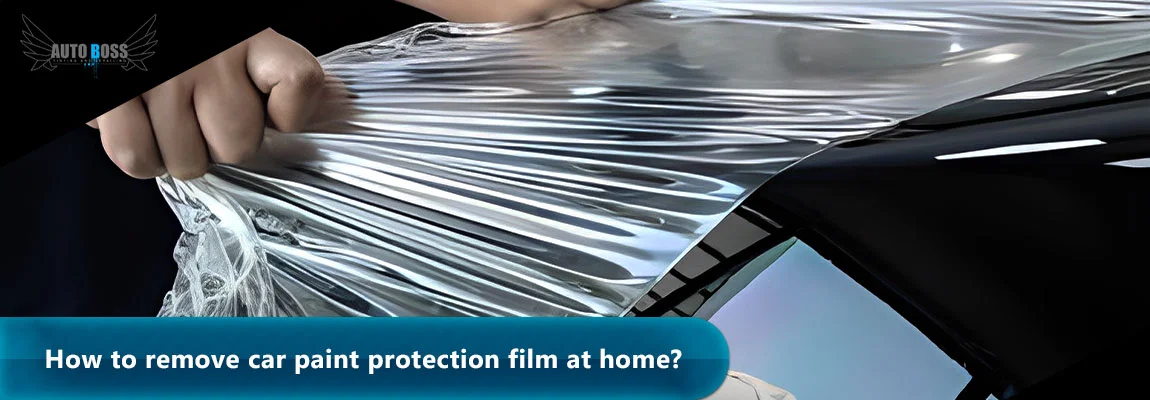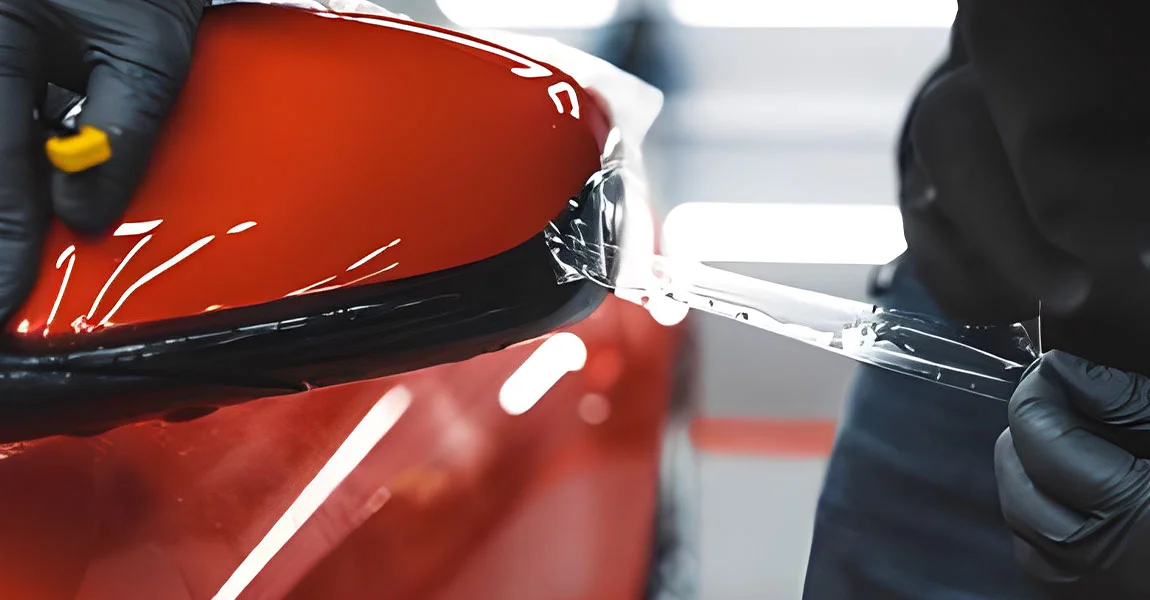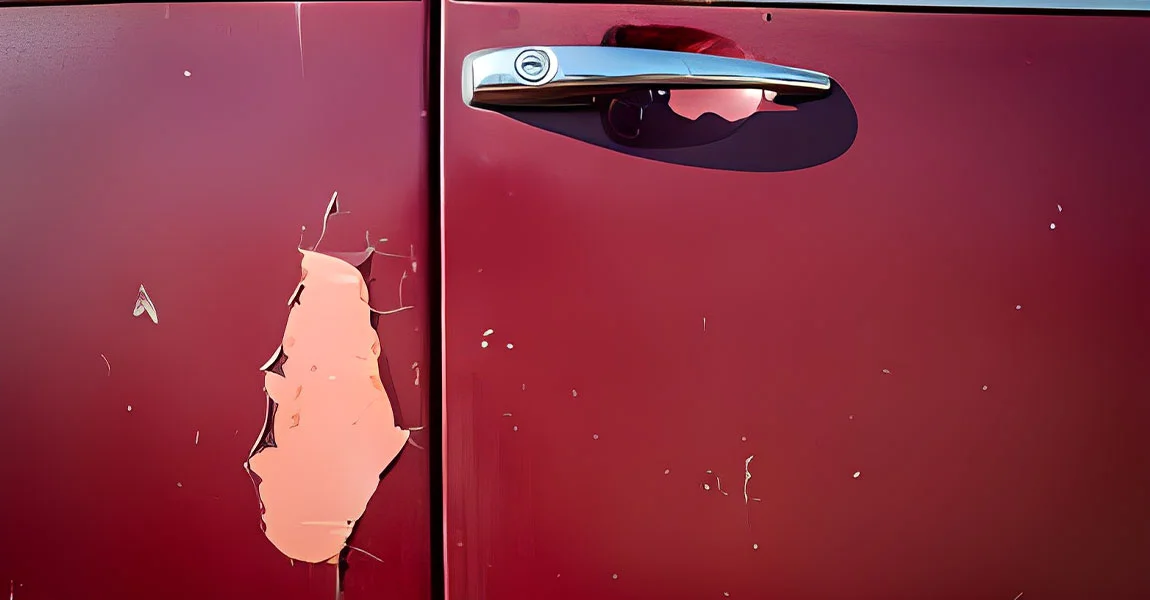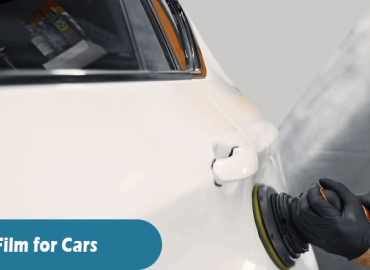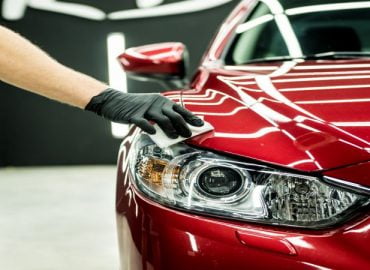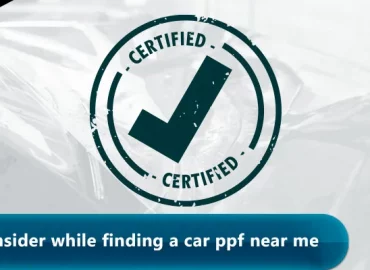Removing a clear wrap car is easier than installation, but the process carries some risks. Suppose a car paint protection film is installed properly and sticks to the car paint surface. In that case, you can save difficulty in removing the PPF car in a single piece or without damaging your car paint. Moreover, the PPF quality, the environment, and other factors also affect the process of removing paint protection film.
A comprehensive guide to car paint protection film
In this comprehensive guide, we will discuss everything you need to complete the process of removal.
Removing PPF coating
Removing a PPF car coating is not easy, like peeling off a large sticker. Before talking about the removal process, understand what paint protection film is. While PPF is a protective, durable film that can be stretched, it has a strong adhesive that helps it stick to the car paint.
Tools required for the removal process
Car paint protection film removal is a simple process and doesn’t require specialized tools. You may have tools available at your home. Tools required for the removal process are
- Heat gun
- Microfiber mitt/ towel/ cloth
- Adhesive remover
- Car washing kit.
You will need to heat the adhesive with any heating source or by laying microfiber or cotton cloth on the car’s surface and then pouring hot water on it. Be careful while using a heat gun because excessive usage of a heat gun can lead to paint damage. A properly heated film will not leave any adhesive on the car’s surface.
Pro-Tip: if you are removing a PPF car for the first time, it is better to use hot water instead of other heating resources.
The Process

Firstly, you need to prepare your vehicle for the PPF removal process, especially if you are doing it in cold weather. Leave your car in a warm garage for at least one day prior to the PPF removal. However, if your weather is hot, we suggest you park your car under direct sunlight for a few hours. Here are the important steps for removing PPF coat.
Prepare a panel or portion
Choose any portion or panel to start peeling the PPF car. Ensure the vehicle is parked under the direct sun. Start warming the film up by using any heating resource. Warm every edge of the film. If you are using the hot water method, uncover the portion; now it’s time to remove your paint protection film.
Peel the PPF off
Pick up the car paint protection film from the corner and gently start the peeling by grasping the film close to the car surface. If you find the PPF harder to peel, apply heat again. Heat will loosen the adhesive, but avoid tearing the film. Don’t use a blade or sharp object during peeling as it can create damage to the car paint or get the paint peeled off. Don’t speed up the process because it may cause your PPF to tear and leave the residue behind.
Removing the glue residue
Most of the PPF glue is removed by heating the film properly, but there is the possibility that some of it can be left on the paint. Heat this residue by using a heat source like a heat gun or hair dryer. You can also use adhesive remover and microfiber mitt or towel. Avoid using hard objects or scrapers, even if they are made of plastic; sharp plastic can also create scratches on your paint.
Wash your vehicle
After removing the clear paint protection film from the car, wash your vehicle to remove the remaining contaminants and chemicals. Don’t go for an automatic or pressure car wash because it will ruin the finishes of your paintwork underneath the PPF coat.
Professional tips to follow
Here are a few professional tips to follow while removing your car paint protection film:
- You can use boiling water over a microfiber tip to loosen the adhesive instead of a steamer. The hot water enables the film to leave the car surface easily. The hot towel absorbs heat and is less risky than other heating resources.
- Use a hairdryer as a heating resource instead of a heat gun, as these resources take more time to melt adhesive than hot water. Avoid keeping the heat in one place because it may burn the film from that part and damage the car’s clear coat.
- Avoid removing paint protection film in extremely cold weather, as the coldness of the weather can make the PPF removal process complicated.
- Choose a garage or large space for the process to avoid dirt and debris that comes with the air.
- If you are removing Paint protection film in direct sunlight ensure the number of trees should be less in the territory.
What happens if you make a mistake in the process?

The costly mistake that can happen is paint damage. These incidents are nearly zero when it comes to removing the paint protection film by a professional detailer like Auto Boss. Some of the low-quality paint layers can also be damaged because of heating. We suggest not installing a PPF coat on low-quality paint works.
On the contrary, poor-quality car paint protection films can also cause problems in the removal process. Low-quality protection films are less durable, crack, tear, or leave excessive glue residue during the process, making it complicated.
Conclusion
When cracks or fading patches appear on the surface of the PPF coat, it is time to remove or replace it. You can remove car paint protection film easily.
The process of removing paint protection film may take a minimum of two days with proper arrangement. If you feel it is a difficult and cumbersome process, you can partner with Auto Boss experts. They have every facility, including garages, for the process.
FAQs
Can PPF car coating be removed?
Yes! You can remove the paint-protected layer by simply heating it. Hold a heat gun from 8 to 12 inches away from the protective film. Heating makes it easy to remove the film.
Is it easy to remove clear protective film from cars?
It is easy to remove clear protective film from cars if you choose the right temperature and techniques.
Can paint protection film damage the car’s clear coat when removed?
PPF removal doesn’t cause harm to car paint when the process is completed properly.

